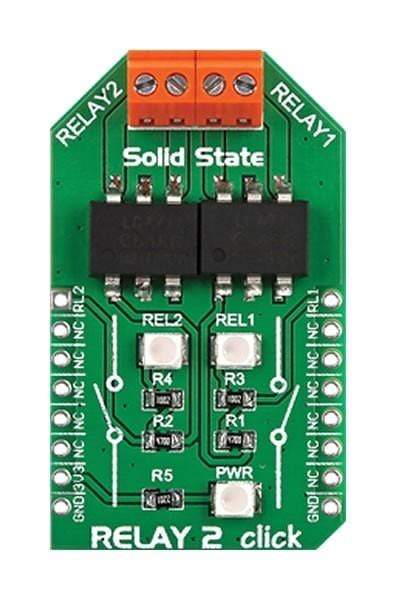
Overview
The Relay 2 Click Board™ from MikroE is an add-on board designed for designs where the user wants to keep the microcontroller in an on and off relationship with two different devices at the same time, like lights, motors, and other similar devices.
The board comprises of two LCA717 OptoMOS solid-state relays that provides fast, silent and bounce-free switching. It also has two screw terminals for a secure connection. With a blocking voltage of 30V, both the relays have a high load current of 2A and a very low maximum on-resistance of 0.15'.
Downloads
La carte Relay 2 Click Board™ de MikroE est une carte complémentaire conçue pour les conceptions où l'utilisateur souhaite maintenir le microcontrôleur dans une relation marche/arrêt avec deux appareils différents en même temps, comme des lumières, des moteurs et d'autres appareils similaires.
La carte comprend deux relais statiques OptoMOS LCA717 qui assurent une commutation rapide, silencieuse et sans rebond. Elle dispose également de deux bornes à vis pour une connexion sécurisée. Avec une tension de blocage de 30 V, les deux relais ont un courant de charge élevé de 2 A et une résistance maximale à l'état passant très faible de 0,15'.
| General Information | |
|---|---|
Part Number (SKU) |
MIKROE-1899
|
Manufacturer |
|
| Physical and Mechanical | |
Weight |
0.028 kg
|
| Other | |
Country of Origin |
|
HS Code Customs Tariff code
|
|
EAN |
8606015076584
|
Warranty |
|
Frequently Asked Questions
Have a Question?
Be the first to ask a question about this.

